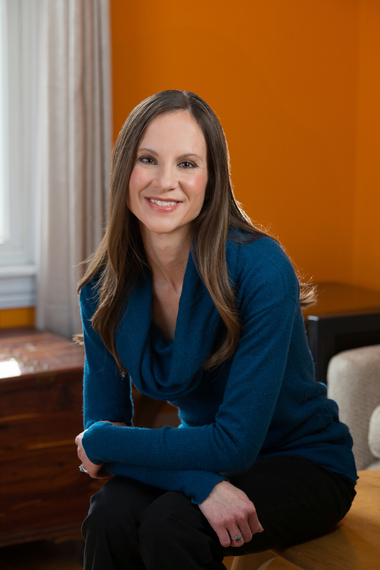Mary Kubica, author of The Good Girl and the newly released Pretty Baby, takes readers through suspenseful twists and turns after a chance meeting between two women on a train platform. Fans of Gillian Flynn's Gone Girl will appreciate this interesting take on the thin line that separates sanity and darker impulses. We talked about her inspiration for Pretty Baby, being surprised as a writer, and what it means to be a villain.
Pretty Baby begins innocently with a chance meeting of two women in a train station. Tell us about how you found Heidi and Willow.
Truthfully, I believe Willow is the one who found me. I was struggling to come up with a new and compelling storyline for my second novel and starting to get a bit frustrated. I quickly dismissed each idea I came up with for their implausibility or lack of uniqueness when I was struck by an image of a young, homeless girl with a baby waiting beside the Chicago 'L'. I had no idea who she was at the time or what her story would be - or how it was that she sprang suddenly into my mind - but I knew she was at the core of my next book. I immediately started writing the opening scenes of the novel, where Heidi encounters Willow for the first time, and at that point the story was off and running.
Your book masterfully moves through twists and turns. I don't want to give away of them away, but I do want to know more about your writing process. Do you outline or plan? Do your characters ever surprise you with twists you didn't see coming?
I don't outline or plan, but prefer to develop my characters and let them take control of the writing process. When I begin each novel I have only a vague idea of where I'm headed, and take it one day or one chapter at a time. I find that overthinking the storyline takes away from the natural flow of events and makes the narrative feel deliberate or forced. My characters surprise me all the time with twists that develop in the storyline, and the unexpected decisions they make along the way. I often have little or no idea how my stories will end until I write the final scenes.
Pretty Baby dives deep into moral ambiguity. How would you define a hero? What about a villain? Can a character be both?
Yes, a character can be both a villain and a hero, and I think my first two novels are proof of this. A hero to me is someone who shows courage and makes difficult decisions for the sake of others; a villain is the antithesis of this, someone who intentionally inflicts harm on others, whether physically or emotionally. Moral ambiguity is certainly at the heart of Pretty Baby, as good characters make questionable decisions, or they make immoral decisions for moral reasons or vice versa. The line between good and bad blurs in this book, as issues of charity and abuse, adultery and mental illness emerge. At the heart of moral ambiguity are also those complex characters who do things the reader may not expect them to do, making us question whether or not a character is who we presumed them to be.
This novel alternates between several different points of view. How did you decide which characters could tell this story? What do the multiple voices add to the narrative?
Although I knew Pretty Baby would center on the story of Willow and her baby, my first instinct was to tell the tale from only Heidi and her husband Chris's perspectives. I started writing the novel this way, and then partway through decided Willow needed a chance to tell her own side of the story, and boy does she have quite a story to tell, one which certainly couldn't be held back. As an author, I love writing with multiple perspectives, as I feel they offer the reader a well-rounded view of the characters and a sneak peek at each of their innermost thoughts. It also provides readers with a chance to see the story from all angles rather than just one.
Your first book, The Good Girl, enjoyed great success. What changed about your writing process between The Good Girl and Pretty Baby? What's next for you?
In all honesty, not much changed between The Good Girl and Pretty Baby. I'm a firm believer in If it ain't broke, don't fix it, and so truly held firm to this when writing Pretty Baby. I did learn quite a bit about myself and my writing strengths and weaknesses in working with an agent and an editor, and was able to apply this knowledge to Pretty Baby, but as for my day to day process, not much changed.
I am currently finishing up my third novel, Don't You Cry, which simultaneously tracks the disappearance of a young Chicago woman and the appearance of a mysterious woman on the eastern shores of Lake Michigan in a small harbor town. Don't You Cry will release in the summer of 2016 from MIRA Books.


